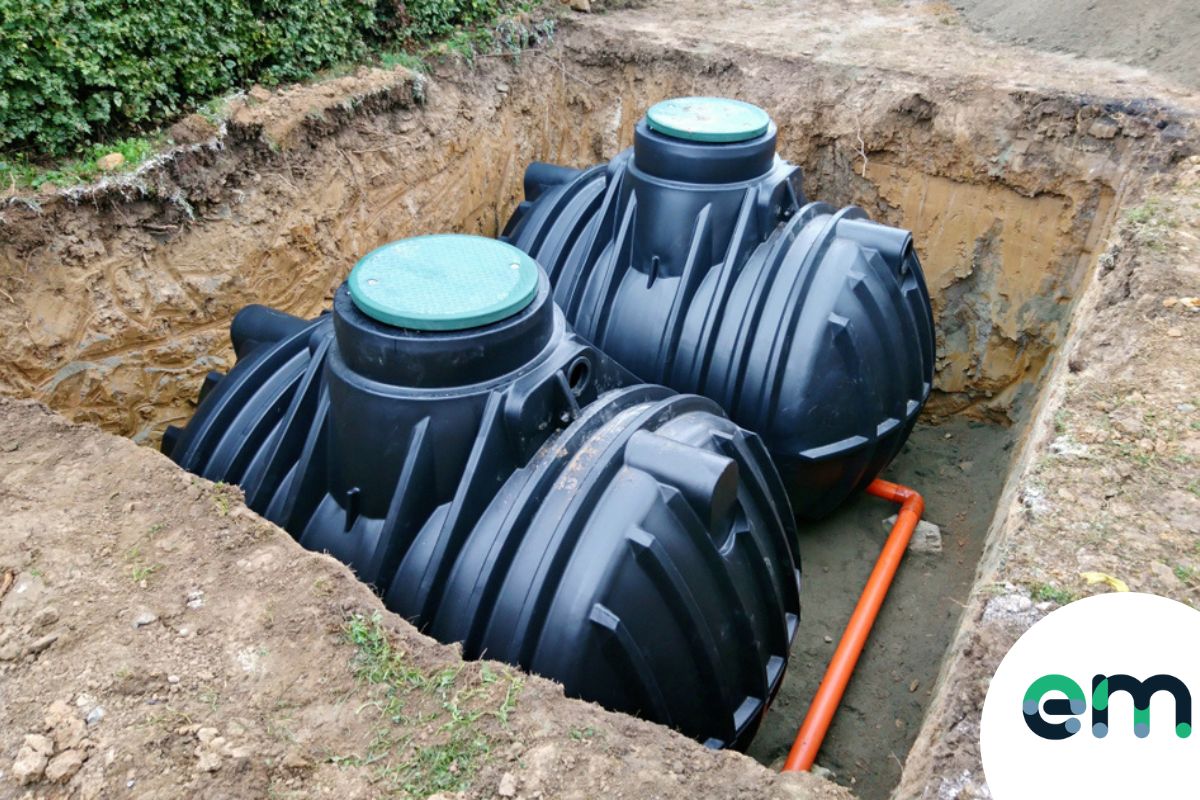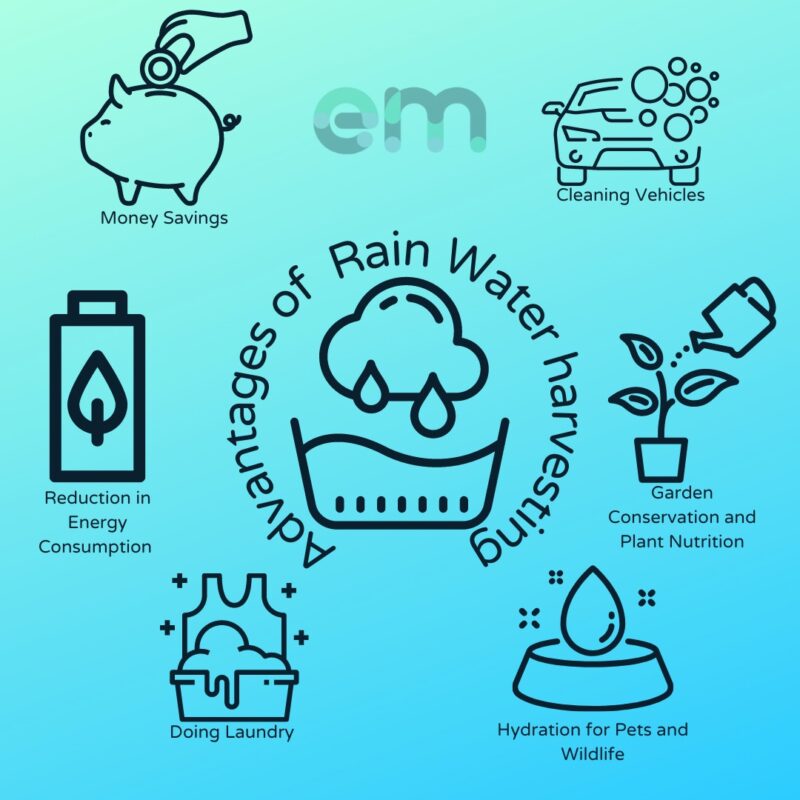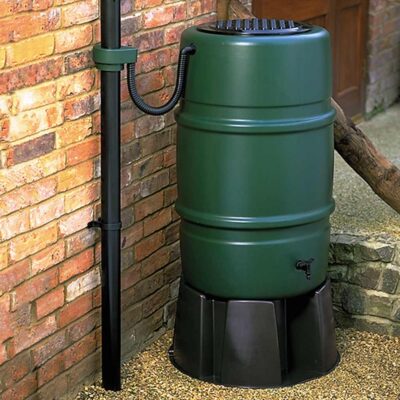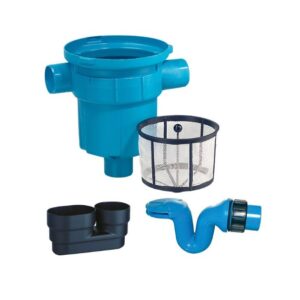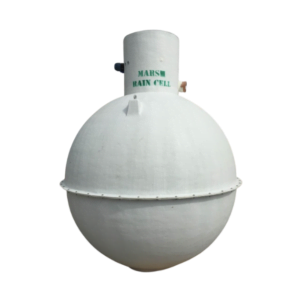No products in the basket.
Blog
Installing a Rainwater Collection System
Although the Environment Agency believes that a lack of water is likely to become a major issue in the very near future, UK households consume more water than ever before – the Energy Saving Trust has recently reported that the average UK home now uses around 330 litres per day, which is double the average of 165 litres used in 1960. This is particularly problematic as climate change continues to impact how much of the natural resource is available due to drier summers and less predictable rainfall, and it’s estimated that summer rainfall will be reduced by around 15% by the 2050s in England, and will decrease by as much as 22% by the 2080s.
A key way to tackle the issue is to simply use less water, more efficiently, which is why eco-friendly practices such as rainwater collection are growing in popularity. There are two main methods of collecting rainwater – potable, which involves filtering systems that make the water safe to drink or wash with, or non-potable, which is where the water is collected and re-used for more general purposes. In this post we cover the advantages and uses of the latter method of rainwater harvesting, and provide an overview of what you need to get started if you’re looking to play your part in conserving our environment.
Advantages and Uses of Rain Harvesting
Harvesting rainwater can provide a number of benefits for people and our planet, including:
Money savings – By utilising rainwater collected around your own property, you will use less water from your mains water supply, which can help to reduce the cost of your water bills.
Garden conservation – For areas where hosepipe bans are sometimes implemented, rain water harvesting can help to ensure that your garden is well watered during even the driest seasons.
Plant nutrition – Rain water naturally contains nitrates which provide important nutrition for garden plants and house plants, and helps them to grow and retain healthy leaves. It also doesn’t contain chlorine or other treatment additives and chemicals which can sometimes damage certain plants.
Reduced energy consumption – As well as saving water, relying on a natural water source means you are using a little less energy too, as it doesn’t need to be processed via a waterworks, and therefore further reducing your carbon footprint.
In addition, collected rainwater can be used for a variety of useful purposes, including garden irrigation and maintenance, toilet flushing, cleaning vehicles, and even doing the laundry. Although rainwater is not safe for human consumption or bathing unless it is properly treated first, it can provide a hydration source for pets and wildlife, and can also be used to top up ponds and other water features around the garden.
Required Equipment
The process of collecting and storing rainwater is relatively straightforward if you’re looking for a quick and easy solution to cut down your reliance on the mains supply. You simply need to install a rainwater diverter within your external drainage system, and then ensure that the diverter is connected to a storage solution.
Once your system is in place, rainwater that flows through your guttering and downpipe can be diverted to your selected storage method, ready for you to make use of when needed. The amount of rainwater that you’ll collect will of course vary depending on the weather, however as a general rule of thumb,1 square metre of roof and 1mm of rainfall is the equivalent of 1 litre of captured water.
If you are interested in installing a more sophisticated rainwater system that can provide a source of water for everyday household use, you will need to appoint experienced professionals as the job will involve several major steps that require specialist expertise and equipment. These steps include the excavation of an outdoor area to accommodate a large tank, preparing a base course, carefully lowering the tank into the excavated area, connecting the tank to the relevant pipework, installing filtration components, and installing a pump system inside the building.
Catchment Surfaces
While the majority of homeowners tend to set up rainwater harvesting systems that collect water from the roofs of their houses, there are also several other places across a standard home and garden that it can be gathered from. These locations, which are referred to as catchment surfaces, include the rooftops of garages, sheds, sunhouses, greenhouses, polytunnels and any other types of outbuildings that are located in gardens.
Rainwater Diverters
Diverters are very effective and inexpensive pieces of kit that are used to divert water that would normally flow down into the ground drainage system of a property. By connecting a diverter to your drain pipes, rainwater can instead be directed into a rainwater harvesting tank. You can find more information about rainwater diverters, including the different types that are available and a brief guide to the installation process, in our recent blog post.
If the diverter you choose isn’t already fitted with a rainwater filter, it’s recommended that you install a separate one to help ensure that any debris, leaves or other contaminants aren’t also being diverted into your rainwater storage.
Storage Options
There are three main types of rainwater tanks, which are available in various sizes and styles to suit your requirements:
Rain barrels – A rain barrel, sometimes referred to as a water barrel, is made from a very durable plastic and has a traditional shape and look which some homeowners prefer as it better suits the aesthetic of a residential garden. In the UK, rain barrels usually have a capacity of up to 260 litres, which is more than enough for general use around the garden, and they feature a tap outlet or hose pipe connection so you can easily access the stored water as and when needed.
Water tanks – A water tank can hold much higher volumes of water (as much as 50,000 litres for commercial applications) and can be stored either above or below ground if required. With the right technology and components, water from a rainwater tank can also be pumped into a household to be used as an alternative for a mains supply (although a mains water backup should always be in place) and can used for everything from flushing toilets to providing water for washing machines or even a swimming pool. A potable rainwater tank can also be used to provide drinking water, as well as water for personal washing, providing it goes through a specific filtration process to ensure that the water quality doesn’t pose a health and safety risk.
Water butts – Suited for domestic use, water butts usually only have a storage capacity of 245 litres or less, which makes them an ideal garden solution to collect rainwater. They also come in a wide variety of shapes and styles, including cylindrical and rectangular designs that enable a water butt to be fitted neatly against a house or building, and thereby taking up less space. Placing your chosen water storage solution close to your downpipe also means less pipework in general, which is always advisable where possible.
If you are unsure if a water butt will be sufficient for your needs, or if you’ll require a larger solution such as a rain barrel, you can base your choice on how much of the collected water you are likely to use throughout the course of an average week – bear in mind that rainwater that hasn’t been treated will stagnate fairly quickly, so it needs to be used quite frequently to prevent it from becoming a haven for breeding pests and bacteria.
There is also a straightforward calculation you can use to approximate how much rainwater you’re likely to collect in your area – simply multiply the area of your catchment surfaces by the average level of rainfall and precipitation in your region (which you can find an estimate of via online resources such as currentresults.com) and then reduce the total by 20% to allow for overflow and evaporation.
Ongoing Maintenance
Once correctly set up, a rainwater harvesting system generally requires very little upkeep, however as with any functioning system, it should be regularly inspected to ensure that everything is working as intended. It is recommended that you follow any specific instructions provided by the manufacturer of your chosen system, however as a general guide, it is worth regularly checking that your gutters and downpipes are free from debris, and that any filters you’re using are kept clean. You should also check your storage tank for any signs of leaks or damage, as well as any connecting above ground or underground pipes (if it’s an underground rainwater harvesting system), and if you’re using a submersible pump you should periodically make sure that it’s functioning correctly.
Unfortunately, standing water within rainwater harvesting systems can be particularly attractive to mosquitoes, however there are a number of actions that you can take to minimise the problem. Adding a very thin layer of horticultural oil, vegetable oil or natural soap is a tried and tested method that gardeners use for keeping mosquitoes out of water, or if you would rather not add anything to your rainwater, you can protect it with a firmly affixed fine mesh net. Some gardeners even add goldfish to their rainwater storage tanks to keep pests under control, however this isn’t usually the best route, not least because it means that your water storage system needs to be kept out of direct sunlight and it requires additional care for the fish to ensure they’re kept at the right temperature.
High Quality Systems
If you are looking to increase your self-sufficiency and harvest rainwater, at EasyMerchant we offer a wide range of rainwater harvesting tanks, rainwater diverters, water butts, and rainwater harvesting systems. All of our products are produced by leading manufacturers so you can be assured of their high quality, plus we offer a fast delivery service which means we can ship your order within 1-3 business days.
If you have any questions about which type of rainwater harvesting kits best match your requirements, or you need further information on any of our rainwater catchment products, just let us know and our team of experts will be happy to help.
Shop Rainwater Harvesting:
